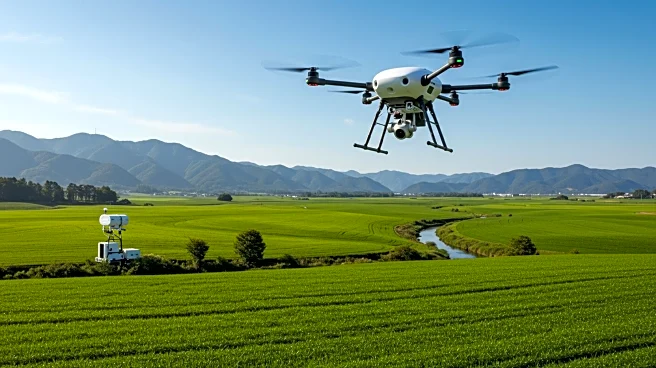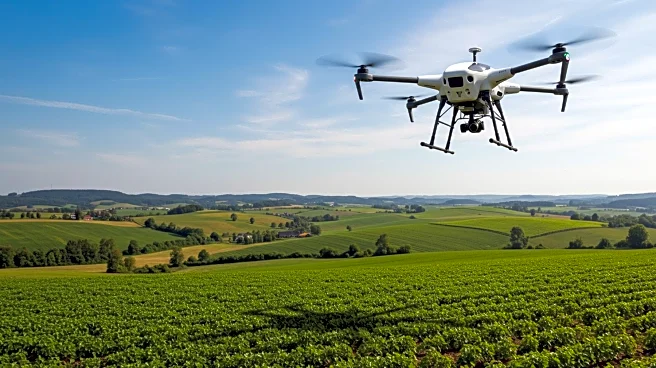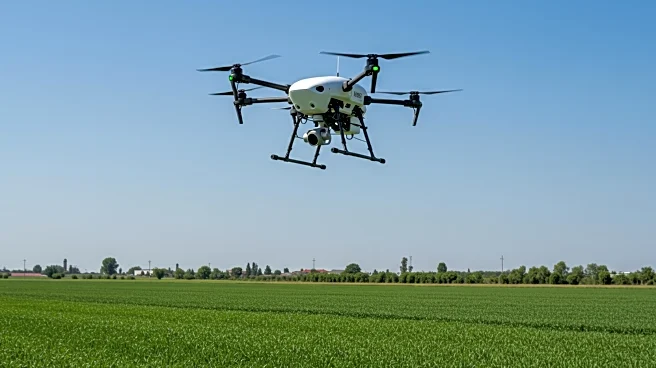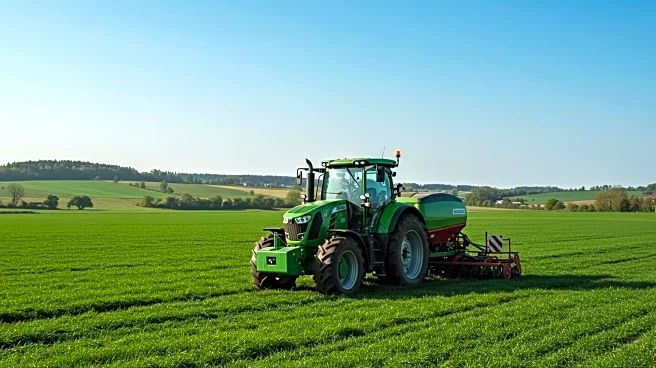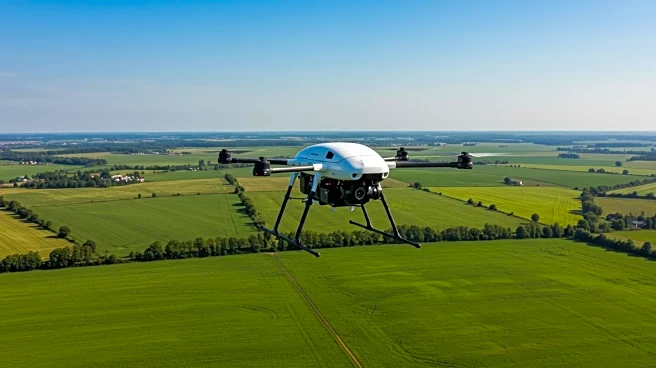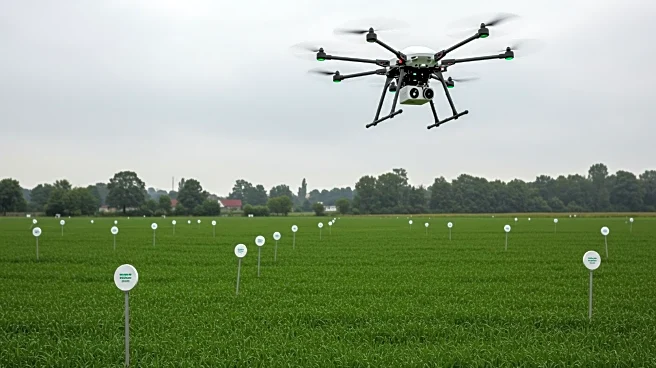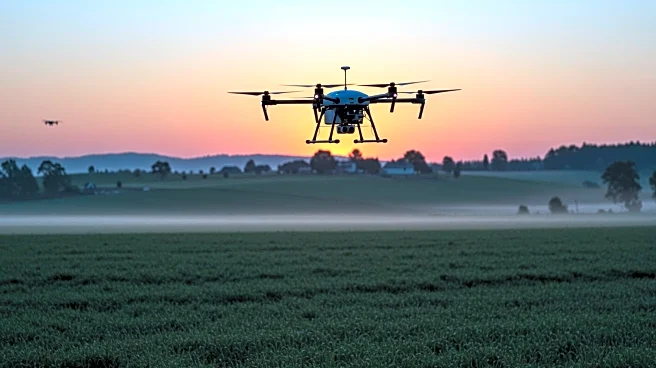What is the story about?
What's Happening?
The AI in Precision Agriculture Market is experiencing significant growth, driven by the adoption of predictive analytics and machine learning technologies. According to InsightAce Analytic, the market is valued at USD 776.0 million in 2024 and is projected to reach USD 4755.0 million by 2034, with a compound annual growth rate (CAGR) of 20.0% during the forecast period. This growth is fueled by the integration of AI with GPS systems and sophisticated data analytics, which optimize crop production and resource utilization. The use of AI provides real-time insights into soil conditions, weather patterns, and crop health, enabling farmers to make informed decisions that enhance productivity and sustainability. The agriculture sector is undergoing a technological transformation, with smart machinery and autonomous robotic systems playing a crucial role in this evolution.
Why It's Important?
The adoption of AI in precision agriculture is crucial for addressing global food demand and optimizing resource utilization. AI technologies, including machine learning and predictive analytics, facilitate precise irrigation, fertilization, and pest management, which are essential for sustainable farming practices. The integration of AI with Big Data analytics offers scalable solutions to global agricultural challenges, enhancing operational efficiency and promoting environmentally responsible farming. This digital shift has the potential to drive a modern green revolution, ensuring consistent and sustainable food production amid variable environmental conditions. The market expansion is supported by government policies, financial incentives, and increasing awareness of sustainable farming practices.
What's Next?
North America is expected to maintain a leading position in the AI-enabled precision agriculture market, supported by advanced technological infrastructure and favorable policy frameworks. Europe is also witnessing strong market growth, driven by established agricultural systems and significant investments in AI and digital farming technologies. The ongoing development of AI applications, such as crop monitoring and yield prediction, will continue to improve agricultural productivity and sustainability. Challenges such as high initial investment costs, data privacy concerns, and limited interoperability among AI platforms need to be addressed to facilitate broader adoption.
Beyond the Headlines
The integration of AI in agriculture raises ethical and legal considerations, particularly regarding data privacy and cybersecurity. The extensive data collection required for AI-driven farming practices poses risks of unauthorized access and use. Additionally, the lack of standardized protocols and skilled professionals with technical expertise in AI presents challenges to implementation. Addressing these issues is crucial for ensuring the responsible and effective use of AI in agriculture.
AI Generated Content
Do you find this article useful?
